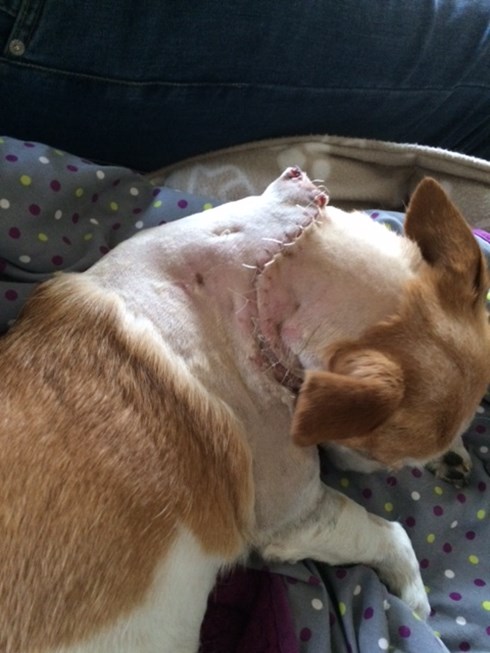Here are some hazards to be mindful of as the festive season gets into full swing.
The following guide shows you which foods to avoid ( the naughty list) & suitable treats (the nice list).
(click on image to enlarge on mobile devices)
The following guide shows you which foods to avoid ( the naughty list) & suitable treats (the nice list).
(click on image to enlarge on mobile devices)
Remember that cats can also be attracted to the foods listed above and as with dogs, are dangerous if eaten.
Other hazards to look out for include;
Batteries;
Ingestion of batteries is more common at this
time of year. If the battery is chewed and pierced it can cause chemical burns and heavy metal poisoning. If they are swallowed whole it is possible
they will cause an obstruction. All batteries are potentially toxic so if you suspect your dog or cat has chewed or swallowed a battery - please call us.
Bottle corks, corn on the cob, cocktail sticks, cracker toys, ribbon and tinsel can be dangerous if swallowed. Ensure that they are tidied away or kept out of reach of pets.
Our Christmas song is a reminder of the hazards
at Christmas time
( to the tune of walking in a winter wonderland)
December's here, the decs are glistening.
The vet's phone rings, we are listening.....
chewed up fairy lights, chocolates found,
steal some bites.
Anxious pets? A New Year's party's planned.
The tree sways, glass baubles disturbed,
wanting to play, meows are heard.
Then something goes wrong, Felix falls down headlong
meanwhile Fluffy's eating purple tinsel strands!
meanwhile Fluffy's eating purple tinsel strands!
In the kitchen,
Christmas cake & gammon ham.
A stretched out paw to reach the turkey crown.
Boiling water carried in a saucepan.
Be sure to keep the kitchen out of bounds!
So as you begin to tire,
watching TV by the fire.
Remember your pets,
safe and sound they must be kept.
Remember;
Christmas time often means a busy home, with friends and family coming
together in seasonal spirit. Remember that new faces and more noise can be
scary for your pet, so it’s a good idea to provide them with a safe room so
they can escape and be put at ease if it all becomes too much. Be mindful of
the front door opening with guests arriving and leaving. Make sure that dogs
can't run out! It’s also important to
maintain your pet’s normal routines, especially with feeding and exercise, to
avoid them becoming too unsettled.
In an emergency
If you think that your pet may have
eaten something that they shouldn't then swift action is necessary.
Follow these four simple steps:
Step 1 - Prevent your pet from eating
any more.
Step 2 - Phone your vet immediately!
Step 3 -Stay calm and follow your
vet's instructions.
Step 4 -Collect the relevant wrapping
and packaging.
Make a
note of our phone number and call us immediately -
01895 633600
DISCLAIMER:
The contents of theArden House Animal Hospital
The contents of the


























